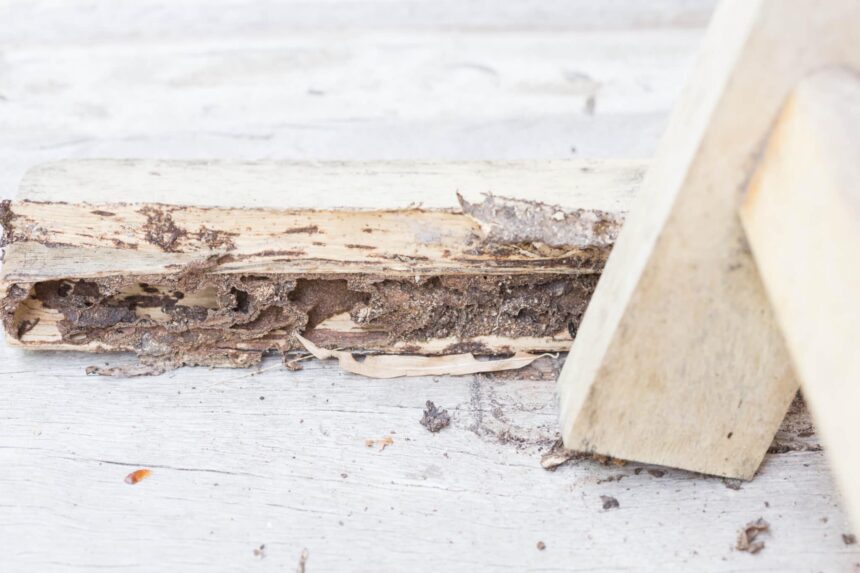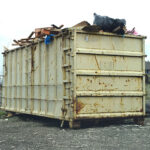Termites are often called “silent destroyers” for a reason. They can live inside walls, under floors, and within wooden structures for months—or even years—without being detected. By the time visible damage appears, the infestation may already be extensive. Ignoring early or subtle warning signs of termite activity doesn’t just risk minor repairs—it can compromise the structural integrity of an entire building.
Whether it’s a home, office, or commercial facility, a termite infestation left unchecked can cause thousands of dollars in repairs and jeopardize safety. Understanding the early signs and acting quickly can make the difference between a manageable problem and a major structural crisis.
Why Termite Control Is Essential for Structural Safety
The Hidden Cost of Termite Damage
Termites feed on cellulose found in wood, paper, and certain fabrics. In buildings, they target wooden beams, flooring, door frames, and support structures. Over time, their feeding weakens these components, leading to sagging floors, warped doorways, and in severe cases, partial collapse.
The Long-Term Impact of Delayed Action
Every month that an infestation continues, the damage compounds. Termites work 24/7, and a single colony can contain hundreds of thousands of insects. Left alone, they can compromise load-bearing walls, roofing frames, and foundational supports.
Common Subtle Signs of Termite Activity
Mud Tubes Along Walls or Foundations
Mud tubes are narrow, tunnel-like structures that termites build to travel between their colony and food sources. They protect the insects from predators and keep moisture inside. Spotting these tubes on walls, crawl spaces, or foundations is a clear warning.
Hollow-Sounding Wood
When termites eat wood from the inside out, the surface may appear normal, but tapping on it produces a hollow sound. This is often one of the earliest—and most overlooked—signs of infestation.
Discarded Wings Near Windows and Doors
Swarming termites shed their wings after mating. Finding piles of discarded wings indoors or near entry points often signals the presence of an active colony nearby.
Why Subtle Signs Are Often Ignored
Misidentifying the Problem
Many people mistake termite damage for water damage or wood rot. This can delay proper treatment, allowing the colony to expand.
No Visible Damage Until It’s Severe
Termites prefer to stay hidden. By the time visible damage—such as buckling floors or sagging ceilings—occurs, the infestation has usually been active for months or years.
The Structural Risks of Ignoring Termites
Weakened Load-Bearing Structures
Support beams and joists that have been hollowed out lose their ability to bear weight, increasing the risk of collapse in extreme cases.
Compromised Flooring and Roofing
Floorboards may creak, warp, or sag as termites weaken the underlying supports. In roofing structures, termite damage can lead to leaks and water infiltration.
Chain Reaction Damage
When structural wood is compromised, it can put stress on connected components like walls, windows, and doors, leading to misalignment and cracks.
Effective Termite Control Solutions
Chemical Barrier Treatments
Applying termite-resistant chemicals to the soil around a building creates a protective barrier that kills or repels termites before they can enter.
Baiting Systems for Colony Elimination
Bait stations placed strategically around the property attract termites and feed them slow-acting toxins, wiping out the colony over time.
Pre-Construction Termite Prevention
Treating the soil and incorporating physical barriers during construction can protect new buildings from infestations before they occur.
Why DIY Termite Control Often Fails
Inability to Locate the Entire Colony
Surface treatments may kill a few termites, but without targeting the colony, the problem persists underground or within walls.
Incorrect Chemical Application
Using over-the-counter products incorrectly can be ineffective and even harmful to humans and pets.
Failure to Address the Root Cause
If moisture issues or entry points are not resolved, termites can easily return after treatment.
Choosing the Right Termite Control Partner
Comprehensive Inspection Services
A reliable termite control service will perform a thorough inspection, identifying both active infestations and areas at risk.
Customised Treatment Plans
Every property is different. The right plan considers the type of termites present, building materials, and environmental factors.
Ongoing Monitoring and Maintenance
Annual inspections and preventive treatments help ensure that termites don’t return, safeguarding your property long-term.
Conclusion
Ignoring subtle termite signs is a gamble no property owner should take. What begins as a few mud tubes or discarded wings can escalate into major structural damage that threatens safety and demands costly repairs. Proactive termite control—including regular inspections, preventive treatments, and swift action at the first sign of trouble—protects your investment and keeps your building structurally sound.
By treating termites as a year-round threat rather than a seasonal inconvenience, you can avoid the expensive consequences of letting these hidden invaders take hold.


